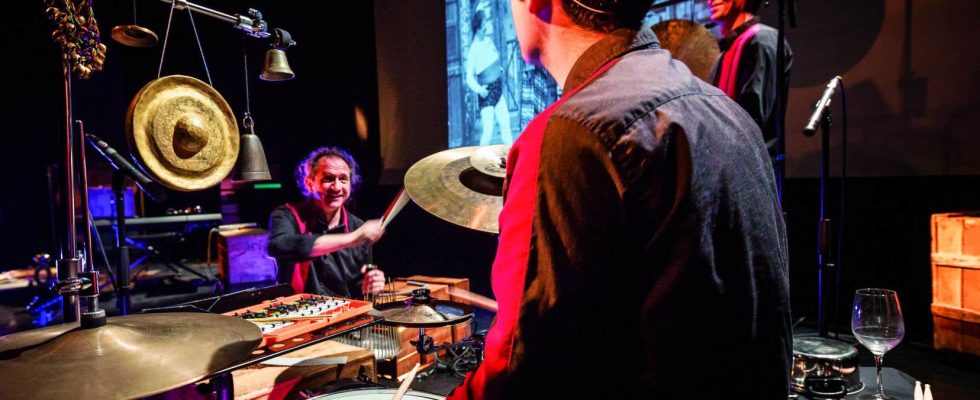At the end of the 19th centurye century, he experienced glory, and in a few decades, decline. His ingenuity had everyone in Paris talking, and he was later reduced to selling toys at Montparnasse station, in the most humiliating anonymity. And it took very little for the work of Georges Méliès (1861-1938) to be reduced to only a few lines in the history books devoted to the beginnings of cinema, he who had destroyed a good part of the 600 films that he had imagined, produced, edited, and broadcast. To date, more than 500 titles have been found all over the world, and his filmography is far from being limited to the famous Journey to the moon (1902).
This magnificent variation of the literary universe of Jules Verne – how can we forget this rocket crashing on the surface of the Earth’s satellite in the shape of a clown face? — does not appear in the show Right in the eye, by multi-instrumentalist and one-man band Jean-François Alcoléa. Which leaves room for so many other discoveries, amusing or truly hypnotic, drawn from this abundant corpus. On stage with two other musicians and surrounded by numerous instruments (piano, guitar, percussion, sea harp, as well as a circular saw and whistles!), the man who is also a composer offers a fanciful setting for around ten films by the inventor of special effects in cinema.
But what guided Jean-François Alcoléa in the choice of these titles? “I have watched 400 of his films,” explains the globe-trotting artist who was passing through Albuquerque, New Mexico, at the time of his telephone interview with The duty. We often associate Georges Méliès with the fantastical world of Jules Verne, but I quickly realized that his creativity has several facets. He draws inspiration as much from his activities as a magician as from his interest in documentaries. Through this selection, I wanted to offer spectators an extraordinary journey. »
Creative freedom
This goes in several directions, sometimes a stylistic exercise of great virtuosity (A man of heads [1898], The wonderful living fan [1904]), sometimes epic adventure crossing all borders and defying gravity (Maine Underwater Tour [1898], Journey through the impossiblee [1904]).
Between films displaying astonishing visual ambitions like Gulliver’s Journey to Lilliput and the Giants (1902), The kingdom of fairies (1903), and others of disarming simplicity such Panorama taken from a moving train (1898), Jean-François Alcoléa had all the latitude necessary to impose his musical style.
Silent cinema also offers this creative freedom, but for the composer, it was as important to be part of a historical continuity as to imbue it with his own style. “I first watched the films more than once, and without music,” emphasizes the man who offers several workshops on image and sound aimed at young people throughout France. The cinema of this era was an attraction between the bearded lady and the jugglers. To attract passers-by, music became essential, first with fashionable tunes, then styles that followed the rhythm of the narration, not to mention that it was necessary to play loudly to drown out the noise of the projector! As Méliès left few indications, I gave each film its own musical identity, and tried to capture its essence. »
An intact flame
Right in the eye celebrates its ten years of existence this year, a success which does not seem to be running out of steam as its creator continues to charm all audiences. Seven hundred performances later, Jean-François Alcoléa swears that his flame remains intact, firstly thanks to the international enthusiasm aroused by the show, presented both in Romania and in the United Kingdom. “In the United States, I would use the expression mind-blowing. Aside from major movie buffs, audiences believe that cinema began with Charles Chaplin and Buster Keaton; It’s touching to see their reactions. »
But doesn’t he sometimes have the feeling of always plowing the same furrows? According to him, the public, very different from one country to another, prevents him, as well as his musicians, from taking the progress of this film concert for granted. “It’s more of a show in its own right,” he explains. There is an element of improvisation, and we must constantly listen to what is happening in the room. » Things can constantly change, and each audience brings its share of surprises. “In Morocco,” recalls Jean-François Alcoléa, “the spectators clapped their hands to the rhythms they are used to, out of time with our music: it gave crazy energy! »
Faced with this, Georges Méliès would surely have had his head in the stars.
